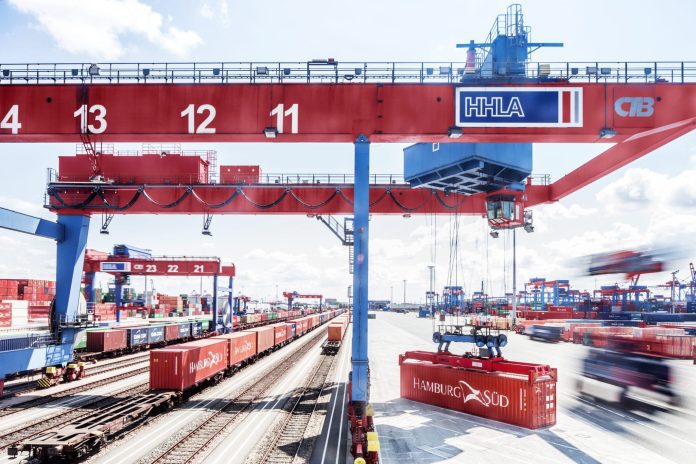Recent trials of industrial 5G at the Port of Hamburg have given the German port a lift, and clear designs about digital change. But it will count for nothing if the German telecoms industry cannot conjure rapid rollout of 5G networks, it said.
“The main goal was to check 5G network slicing works – to see that it performed in real life as it promised on paper. And the conclusion is that, yes, it does. We are just waiting for the telecoms providers to build their 5G networks so we can rent a slice,” said Lars Wentorp, IT director at the Hamburg Port Authority (HPA).
The recent trials at the Port of Hamburg, which involved Deutsche Telekom and Nokia, have established a blueprint for the industrial 5G deployment, reckons the parties involved. Deutsche Telekom said the experiment has proved operators of public networks can serve the industrial space with ‘campus networks’ hived-off of their everyday network setups.
Future 5G coverage in the Port of Hamburg will be provided by a mobile network operator. Wentorp at HPA said: “We are discussing with Deutsche Telekom. We have had a lot of attention here, from its management team. And we have said, repeatedly, that we want 100 per cent 5G infrastructure in our ports, in order to explore all of these use cases. We are really trying to push the providers.”
Wentorp added: “The testbed in Hamburg showed what’s possible, and we have so many new ideas besides. We are ahead of most other ports worldwide, and we are really pushing the telecom providers in Germany to give us more – to give us what we need.
“Because, even if we’re a step ahead – and we might be two ahead, right now – that advantage can be lost in months, if we don’t get 5G in Hamburg, and in Germany. You know, 4G coverage in Germany is not so good. We really hope the country steps up with 5G.”
The two-year Hamburg tests, running across 8,000 hectares, finished at the end of June. The project was one strand of the European Union’s two-part 5G-MoNArch (5G mobile network architecture) project to test diverse services, use cases, and applications for 5G. The ‘touristic city’ in Turin, in Italy, has formed the other part of the 5G-MoNArch remit.
The twin sites have seen testing of 5G inter-slice control and cross-domain management, using a native cloud protocol stack. The Hamburg trials have explored the different network slices for different applications, including environmental monitoring and sensors, traffic control and analytics, and maintenance support and augmented reality.
Wentorp commented: “All of our expectations were met, in terms of reliability, latency, security – our use cases really worked. It was not so much a surprise. We expected it to deliver. But, yes, we were very happy with the results, as well as the collaboration with Deutsche Telekom and Nokia, as the other partners in the project. Everything worked out, really well.
“And we also raised the profile of 5G not just in the port of Hamburg, but in the city of Hamburg, and even in the country of Germany. We really got 5G into the minds of enterprises, to make clear 5G is not just about higher speeds, but about getting more from a mobile network. My favourite line, which someone said, is that mobile has grown up with 5G – that it’s not just about the connection, anymore, but about the services on top.”
He made clear HPA, and port authorities generally, are not candidates for private networks, and would prefer to take slices from national 5G networks instead. “We have never really thought, at any point, about implementing our own network. The telecoms providers in Germany should do that for us – as they have done [with other generations of mobile technology], and as they should for the rest of Germany too,” he said.
At the same time, he noted the appetite among the broad industrial set for private networks, running independenty of public operations, and suggested terminal operators are better candidates for dedicated 5G instalations.
“Many industrial companies in Germany are using campus networks. But from our point of view, campus networks really only work in smaller areas. If you have a construction plant or a factory or a warehouse – or even if you have a single container terminal on a port – then a campus network perhaps makes sense.
“But the port area we cover in Hamburg, as the port authority, is so large that it would take thousands of antennas to build a network of our own. There are certain places in the port, which we cover – like the shipyards, where we do container maintenance, for example – where you might justify a private network. But the entire port area is way too large for a campus network.”

